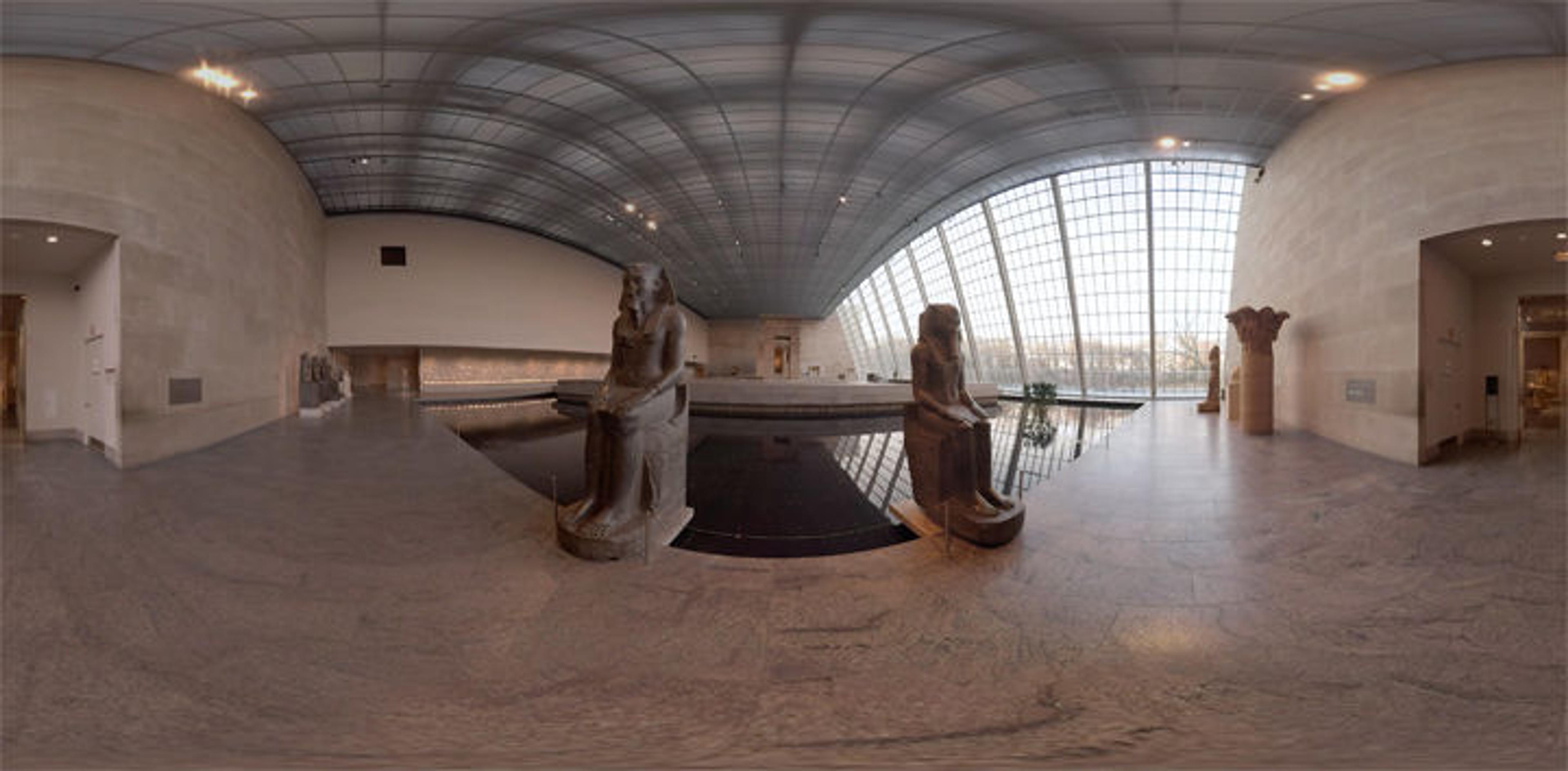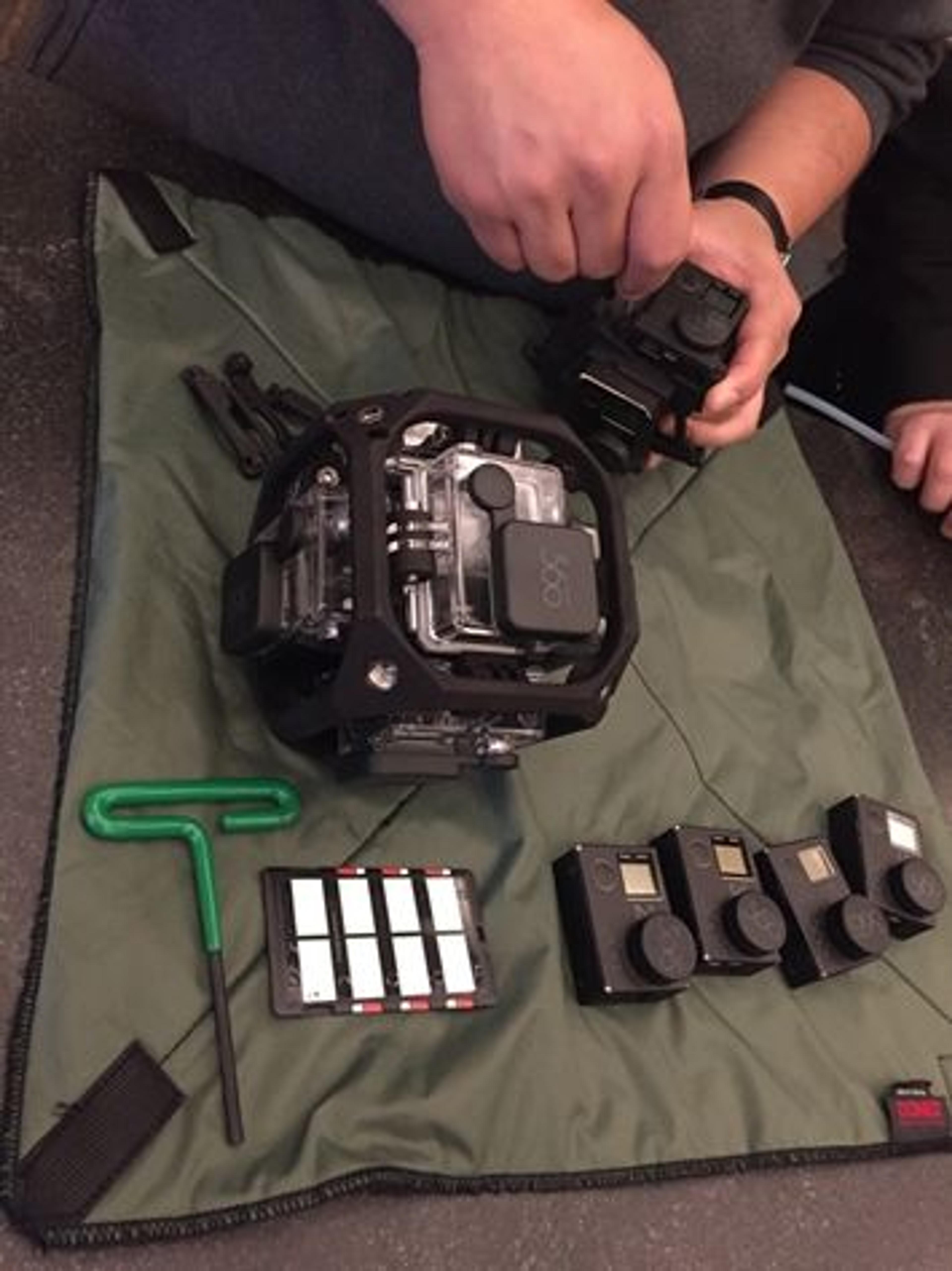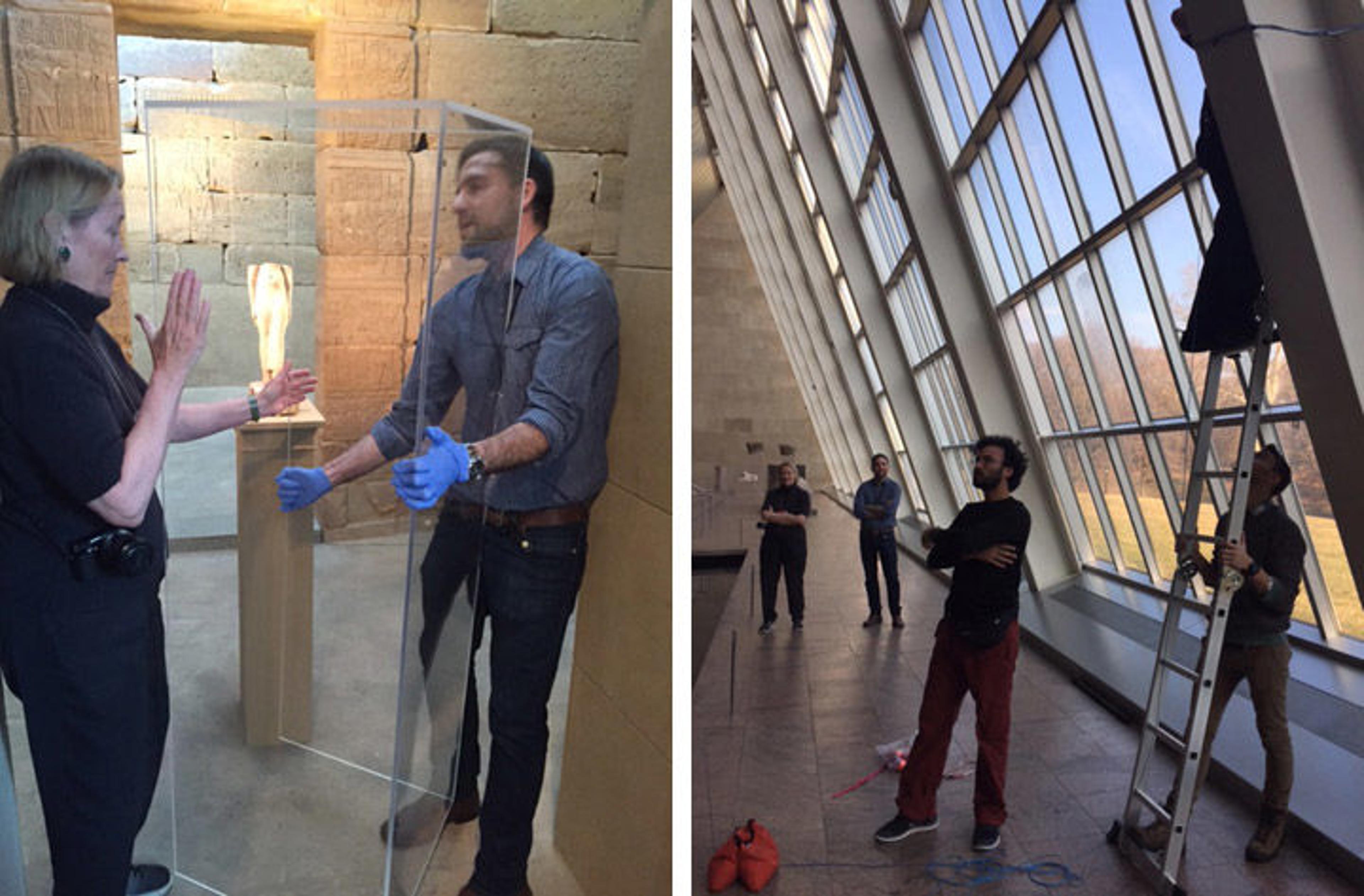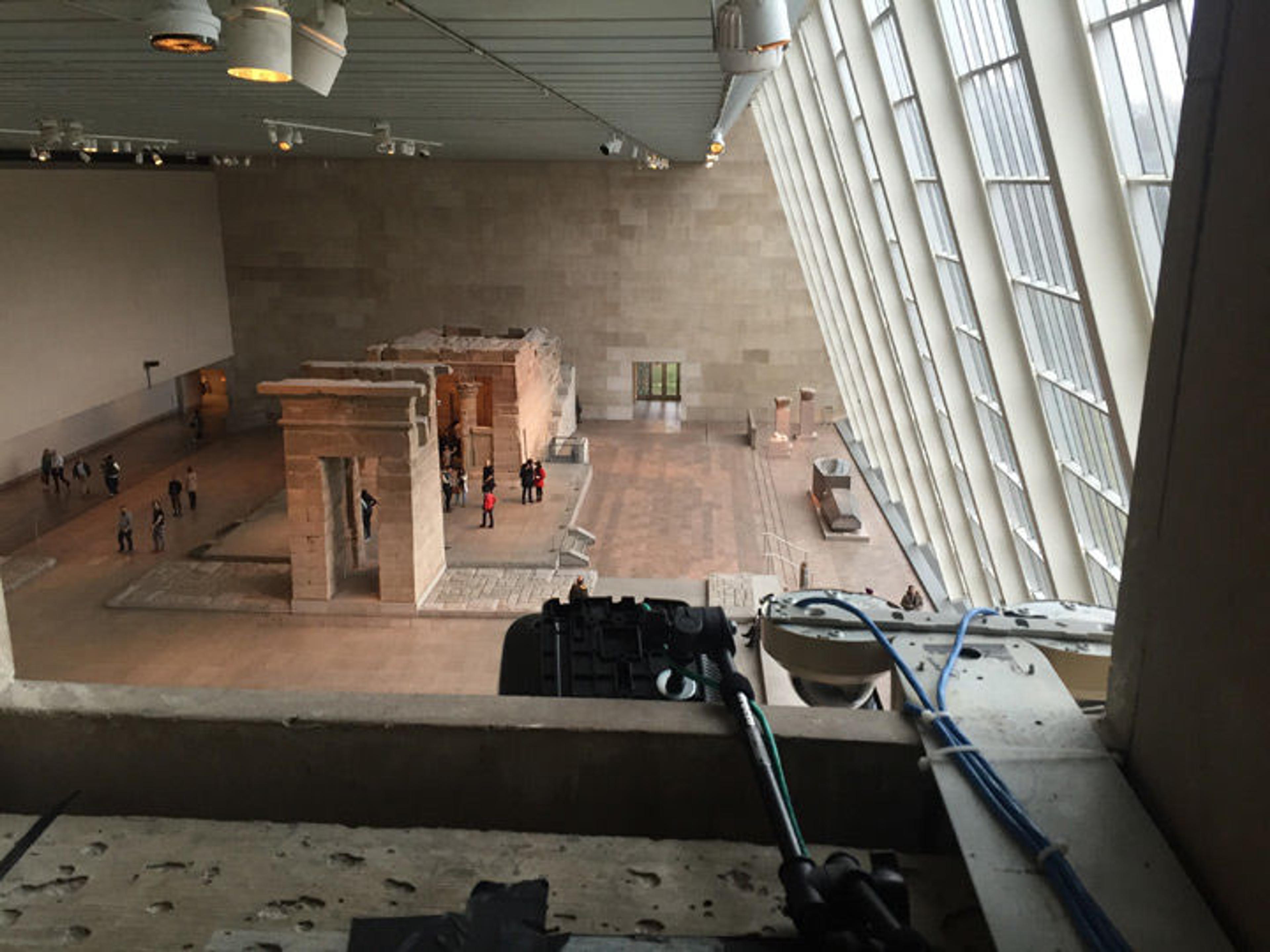The Temple of Dendur: From the Nile to NYC in 360°

The Temple of Dendur in The Sackler Wing as it appears in a single, flattened 360° image. When viewed as part of a 360° video, the image appears in a spherical format. All photos courtesy of the author
«Arriving at The Met in the morning, especially if it's raining, I often duck into the staff entrance at 84th Street to walk the rest of the way to my office inside. Besides staying dry, the other bonus is I get The Temple of Dendur to myself.»
What's not to love? Beyond the architecture, any city-dweller would thrill at the grand silence and all that open, empty space. I'm also partial to the row of lion-headed sculptures of Sakhmet, the powerful defender of the sun god and the pharaoh. For more than 3,000 years they've observed the likes of me pass by, forever withholding their judgment.
I often think, "It's too bad more people don't get to see the Temple this way." Well, now they can.
The Digital Department recently produced a spherical 360° video, "The Temple of Dendur: From the Nile to NYC in 360°," in collaboration with the virtual reality (VR) production company Total Cinema 360 | Koncept VR. Thanks to their expertise, as well as the cooperation of staff from across the Museum, fans of The Met now have a new, dynamic way to explore the Museum using their iPhones, desktop computers, or—for all you early adopters out there—VR headsets.

So, how does it work, exactly? There are various rigs and cameras available, but in this case, picture six tiny cameras that fit into a lightweight rig about the size of a small melon. These cameras simultaneously capture video in all directions: up, down, left, right . . . you get the picture.
Left: Securing six Go-Pro cameras into the rig
In post-production, editors "stitch" those six videos together using nonlinear editing tools. Each "seam" must be digitally camouflaged. This process takes weeks to finesse, and we're grateful to our production team for their particularly careful work. The resulting video can now be played on platforms with 360° viewing capability.
To capture the many moods of this iconic space, we filmed at different times of day: completely empty at dawn and dusk, but also crowded with visitors during open hours. Time lapse presents them as so many transitory figures, rushing among the ancient stones. Back when the Temple was completed in 10 B.C., priests presented offerings and prayers to the gods; today we bring our 21st-century questions, interpretations, and selfie sticks.
What's so special about watching it? In a typical film or video, a director frames the shot and controls what you look at—whether it's a wide shot, a close-up, etc. In 360° video, the director controls the camera placement, but after that, the viewer holds the reins to explore. It's your movements that control the vantage point, which might change each time you watch.
Try looking sideways at Central Park, blinking awake through the windows. Or spin around to see the public streaming in when the Museum opens. You're immersed in the space, without the traditional boundaries of video or film.
So why not just visit in person? Please do! But this video offers a little something extra: off-hours access to the gallery and a unique perspective. For example, before shooting, we removed the Plexiglass case and wires that typically protect the Temple's interior. Now you can admire the walls of hieroglyphics up close and in peace, without someone jostling your elbows.

Left: Curator Catharine H. Roehrig and Senior Departmental Technician Seth Zimiles remove the Plexiglas protection to allow the cameras the clearest view of the antiquities. Right: Rigging one end of the cord along which the camera rig will travel over the reflecting pool.
You also get to walk on water—well, sort of. In one shot, the camera rig traverses the surface of the reflecting pool. It travels on a cord the production team stretched from the gallery's southeast entrance to an I-beam at the north windows facing Central Park. Another shot lets you explore the space from a bird's-eye view—a perspective that eludes most staff, let alone visitors. The secret is the thin, blue cord hanging from the small window in the upper left window.

Rigging one of the moving camera shots from the upper left window.
The camera rig traveled on a cord from that window, all the way to the western doors on the ground floor. The resulting video gives the impression you're floating through space.

Not your everyday view (or anyone's for that matter).
One of my favorite elements is the soundscape composed by Simon Fisher Turner. He layers disparate elements to evoke the Temple's original setting and context. You might catch bird calls, lapping waves, plus other sounds created in the studio such as hushed bells and whispers.
As any visitor knows—whether virtual or in person—The Temple of Dendur has a timeless majesty that still commands respect after centuries. We look forward to hearing what you discover there in 360°.
Over the course of 2016, The Met 360° Project will present a series of spherical 360° videos featuring iconic Met spaces at its three locations. Learn more.
To watch The Met's 360° videos, please visit The Met's Facebook page. To view on an iPhone, please download the Facebook app. To view on a computer, use Chrome or Firefox as your browser.
Related Link
"The Temple of Dendur: From the Nile to NYC in 360°"
Nina Diamond
Nina Diamond is an executive producer and editorial manager in the Digital Department.